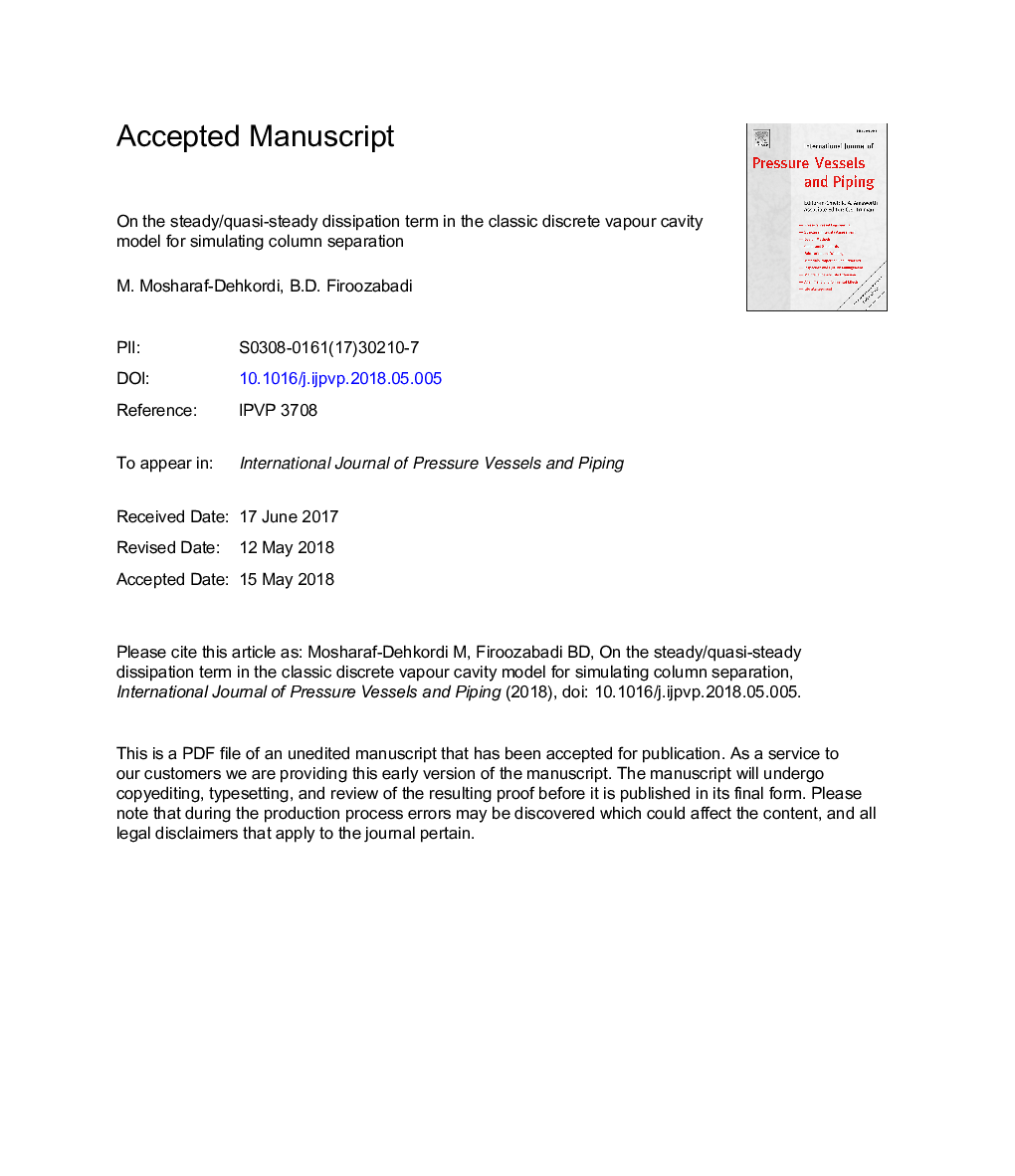| Article ID | Journal | Published Year | Pages | File Type |
|---|---|---|---|---|
| 7174999 | International Journal of Pressure Vessels and Piping | 2018 | 19 Pages |
Abstract
Different families of the Discrete Vapour Cavity Model (DVCM) are developed, including the frictionless, steady and quasi-steady friction models. A relaxation-dissipation approach is proposed to improve the timing of pressure pulses predicted by the classic DVCM. In this approach, a friction correction factor is introduced into the steady/quasi-steady friction term to reduce the local value of the dissipation term in regions facing with cavitation. The proposed approach is completely consistent with the classical water-hammer framework. The importance of the steady/quasi-steady friction term is investigated by comparing numerical results of different DVCMs with the experimental data for various cavitation problems. Based on a frictionless study, it is shown that there exists an unrealistic attenuation in pressure pulses of the classic DVCM. For problems with high-intensity cavitation, it is shown that the frictionless, steady and quasi-steady friction models generally produce different results, especially in terms of the pressure pulses timing. Within the range described in the manuscript, the timing of the classic DVCM pressure pulses can generally be improved by applying the proposed relaxation-dissipation approach on the steady/quasi-steady friction term.
Related Topics
Physical Sciences and Engineering
Engineering
Mechanical Engineering
Authors
M. Mosharaf-Dehkordi, B.D. Firoozabadi,
